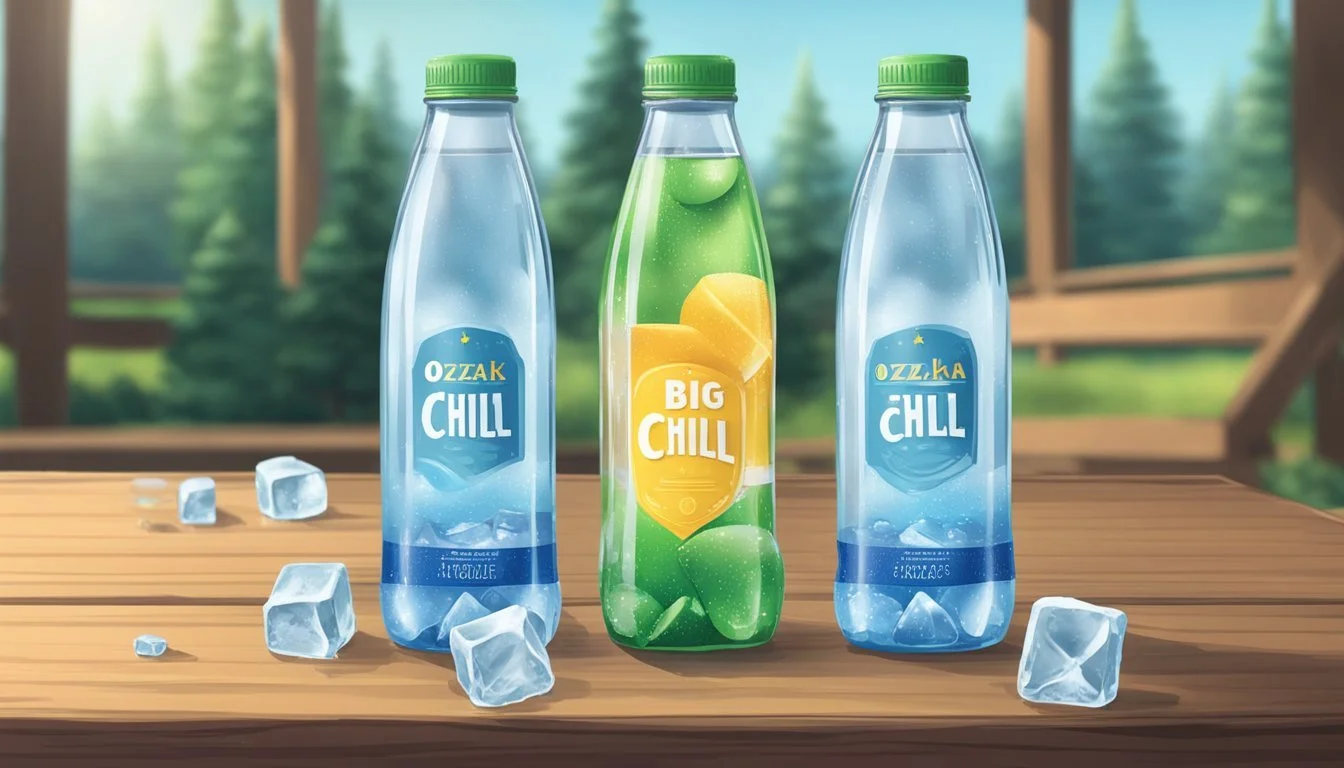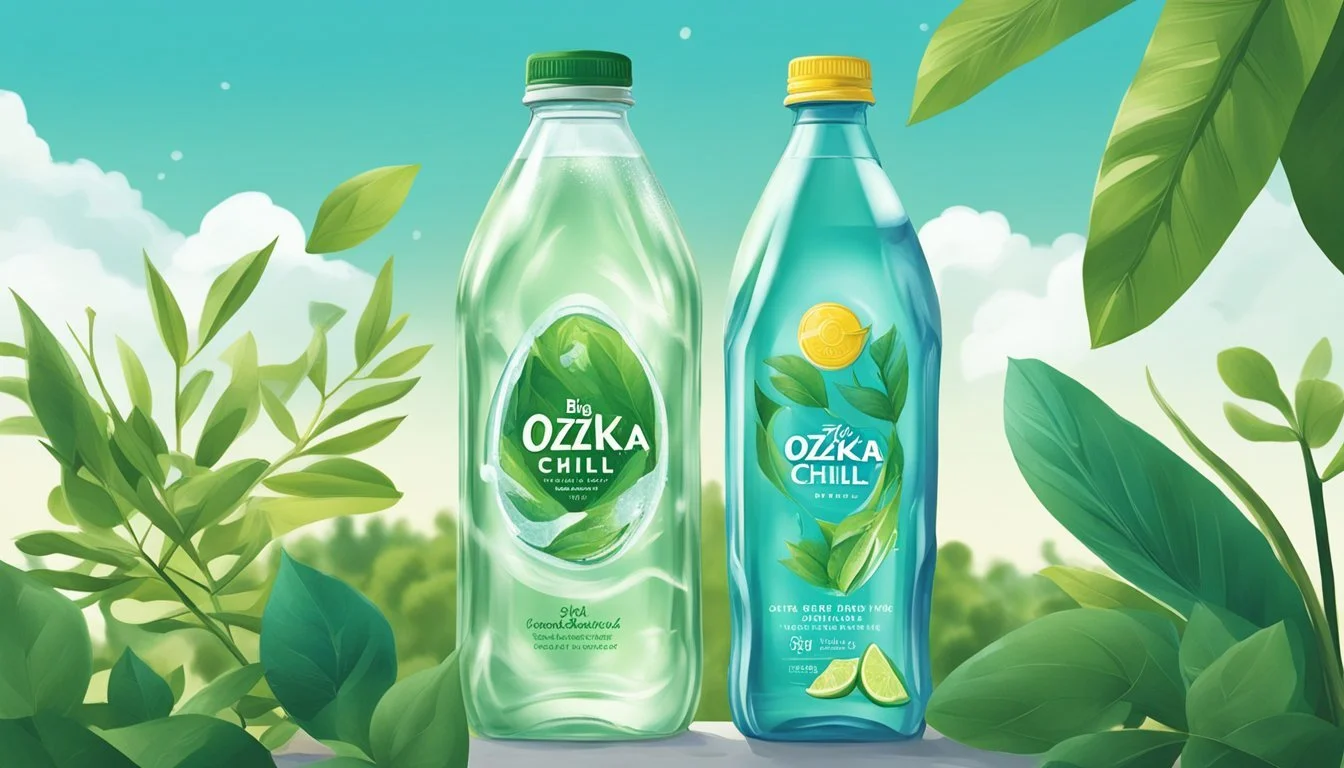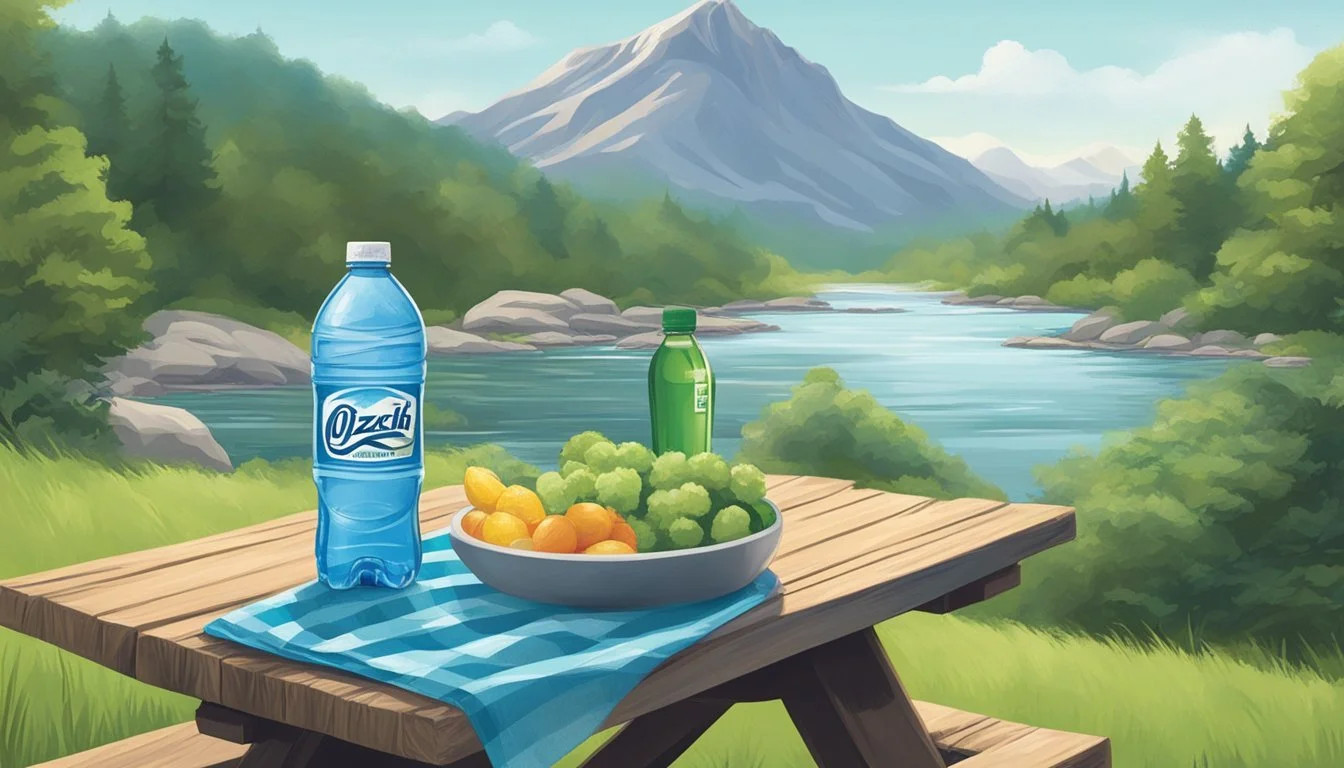Ozarka vs. Big Chill
Comparing Bottled Water Quality and Taste
When it comes to choosing the best bottled water, two brands often come into focus: Ozarka and Big Chill. Each offers its own unique qualities in terms of taste, sourcing, and pricing. For those seeking locally sourced water with a neutral pH level, Ozarka stands out as an excellent option.
Big Chill offers a different experience, often marketed towards those looking for a more affordable option. While it may not have the regional specificity of Ozarka, Big Chill provides reliable hydration at a competitive price point. Both brands aim to meet the essential need for clean, refreshing water, but the choice depends largely on personal preferences and priorities.
Exploring the distinct characteristics of these two bottled water brands will help you make an informed decision about which one suits your lifestyle and taste preferences best.
Origins and Sources of Ozarka and Big Chill
Both Ozarka and Big Chill offer bottled water sourced from unique locations, each providing natural spring water renowned for its quality and purity.
Natural Spring Water and Its Source
Ozarka's bottled water originates from natural springs in the Ouachita Mountains. These springs have been a source of pure water for centuries, with the region's geology naturally filtering the water to enrich it with minerals.
The original source, known as Basin Spring, has historical significance, being considered sacred by indigenous tribes. Today, Ozarka continues to bottle water from multiple springs across Texas, ensuring a consistent and pure product.
Big Chill sources its water from select natural springs, known for their pristine conditions. The groundwaters feed these springs, ensuring the water is rich in essential minerals. These sources are chosen for their isolation from pollution and consistent water quality, ensuring that each bottle of Big Chill meets high standards of purity and taste.
The Journey from Source to Bottle
Ozarka's journey from spring to bottle begins with the careful selection of specific natural spring water sources. The water undergoes rigorous testing and quality control processes to maintain its standards. After collection, the water is transported to facilities where it is minimally processed to preserve its natural mineral content before bottling.
For Big Chill, the process starts at the spring, where water is collected directly from the natural source. The company prioritizes maintaining the natural state of the water. Minimal processing methods are employed to ensure that the water's purity and beneficial minerals are retained throughout its journey to the bottle.
Both brands emphasize stringent quality checks at every stage to ensure that the purity and taste of the water are preserved, delivering a refreshing and reliable product to consumers.
Composition and Quality
Both Ozarka and Big Chill offer unique compositions and quality features that cater to different preferences. This section examines their mineral content, pH levels, and overall purity to assess which brand stands out.
Minerals and Electrolytes
Ozarka sources its water from natural springs in Texas, which provides a unique mineral profile. The water contains essential minerals including calcium, magnesium, sodium, and potassium. These minerals contribute to a clean taste and are beneficial for hydration and health.
Big Chill, similarly, prides itself on a balanced mineral content. However, its mineral concentration can vary based on its sourcing and purification process. It ensures a refreshing taste by maintaining a balanced array of electrolytes, making it a good option for rehydration.
When comparing the two, Ozarka's naturally sourced minerals may offer a slight edge in mineral content consistency.
pH Levels and Alkalinity
The pH level of bottled water is significant as it affects both taste and perceived health benefits. Ozarka typically has a neutral pH level close to 7.0. This neutrality is considered ideal for drinking water and suggests a balanced composition.
Big Chill emphasizes maintaining slightly alkaline water with a pH around 7.5 to 8.5. This alkalinity can be appealing for consumers seeking water that may help neutralize acidity in the body.
While both are within safe and healthy ranges, Big Chill's higher alkalinity may attract those looking for specific health benefits.
Purity and Contaminants
Purity is a critical factor for bottled water. Ozarka adheres to stringent purification processes to eliminate contaminants such as PFAS chemicals, heavy metals, and arsenic. Regular testing ensures their water remains free from harmful substances, promising a clean and safe drink.
Big Chill also prioritizes purity, employing advanced filtration techniques to remove impurities. The brand ensures that its water does not contain harmful levels of lead, arsenic, or other contaminants.
In terms of purity, both brands maintain high standards, but consumer reports may lean towards Ozarka for its natural spring source and rigorous testing protocols.
These evaluations indicate that while both brands offer high-quality drinking water, there are subtle differences that may influence consumer choice.
Health and Hydration Benefits
Understanding the health and hydration benefits of bottled water can influence consumer choice. Ozarka and Big Chill are two brands known for their distinct qualities in promoting hydration.
Hydration Needs and Water’s Role
Water, essential for life, regulates body temperature, lubricates joints, transports nutrients, and removes waste. Proper hydration impacts physical performance, cognitive function, and overall well-being. Both Ozarka and Big Chill offer essential hydration, but Ozarka focuses on locally-sourced goodness, while Big Chill emphasizes purity.
Consumers should drink at least 2-3 liters daily, based on activity level and climate. Hydration from these brands helps maintain energy levels and stave off dehydration symptoms like headaches and fatigue.
Benefits of Proper Mineral Balance
Minerals are crucial for health, aiding in various bodily functions. Ozarka’s water is sourced from natural springs in Texas, ensuring a naturally occurring mineral presence such as calcium and magnesium. These minerals contribute to bone health and muscle function.
Big Chill, on the other hand, filters its water to achieve purity, sometimes adding back minerals for taste and health benefits. Electrolytes in both brands help maintain fluid balance, support nerve function, and prevent muscle cramps.
Thus, choosing between Ozarka and Big Chill could depend on personal health goals, such as a preference for natural minerals or distilled purity.
Taste Profiles
Understanding the taste profiles of Ozarka and Big Chill bottled water can help consumers make an informed choice. This section examines how each brand's unique mineral content and source impact its flavor.
Water Taste Comparison
Ozarka is known for its refreshing taste, derived from natural springs in Texas. The spring source gives it a clean, crisp profile that many find appealing. It has a slightly earthy undertone, which is typical of spring waters.
In contrast, Big Chill offers a more neutral flavor. This purified water undergoes a rigorous filtration process. This results in a taste that is devoid of significant mineral flavors. Big Chill may be preferable for those who desire minimal taste interference.
Impact of Minerals on Flavor
Minerals play a crucial role in the taste of bottled water. Ozarka's natural mineral content from the spring source gives it a distinctive, slightly mineral-rich taste. These minerals include calcium and magnesium, which contribute to its unique profile.
Big Chill, being purified water, has fewer minerals. The purification process strips away many elements that impact flavor. This results in a cleaner, less complex taste. Those who prefer their water with minimal mineral influence might favor Big Chill.
Bottling and Packaging
Ozarka and Big Chill employ distinctive bottling processes and materials that influence their sustainability efforts. Understanding these aspects can help consumers make informed choices.
Bottling Process
Ozarka and Big Chill use advanced bottling techniques to ensure quality and safety. Ozarka focuses on sourcing its water from natural springs in Texas. This water undergoes a multi-step filtration process to maintain purity before bottling.
Big Chill, known for its purified water, utilizes reverse osmosis and other purification methods. The water is typically bottled close to distribution centers to minimize transportation impacts, aligning with their sustainability goals.
Both brands aim to adhere to strict hygiene standards during bottling. This helps prevent contamination and ensures the water meets regulatory requirements.
Material of Bottles and Sustainability
Ozarka traditionally uses recyclable plastic bottles. While these are convenient and lightweight, plastic waste remains a significant environmental concern.
Big Chill also primarily uses plastic bottles, but has initiated efforts to reduce their environmental footprint. They have introduced variations in aluminum cans, which are more easily recyclable.
Compared to brands like Evian and Fiji Water, which also use plastic, both Ozarka and Big Chill lag in offering alternative materials such as glass bottles or boxed water options. Companies like Arrowhead Mountain Spring Water and Ice Mountain Natural Spring Water have explored these alternatives to improve sustainability efforts.
Brands are continually evolving packaging solutions to balance consumer convenience with environmental responsibility, reflecting ongoing industry trends.
Environmental Considerations
Ozarka and Big Chill's environmental considerations revolve around their practices related to water sourcing, ecosystem impact, waste, and recycling initiatives.
Water Sourcing and Ecosystem Impact
Ozarka sources its water from natural springs located in Texas, claiming to have minimal impact on local ecosystems. They emphasize sustainable sourcing to ensure the long-term availability of water resources.
Big Chill, on the other hand, typically sources water from various springs depending on the location, which may result in different environmental impacts depending on regional regulations and practices.
Both brands focus on maintaining natural water cycles, but Ozarka's localized sourcing allows for more consistent monitoring and management of ecosystem impacts in one region.
Waste and Recycling Initiatives
Ozarka:
Utilizes recyclable plastic bottles.
Promotes recycling through awareness campaigns.
Incorporates recycled materials in its packaging.
Big Chill:
Focuses on reducing plastic waste through innovative packaging.
Uses higher percentages of recycled materials.
Encourages customers to participate in recycling programs.
Both brands strive to mitigate plastic waste and enhance sustainability efforts, though their approaches can vary in execution and impact. Ozarka tends to use traditional methods while Big Chill leans towards more innovative solutions.
Market Presence and Consumer Choice
The bottled water landscape in the United States features a wide variety of brands, with Ozarka and Big Chill among them. Their market presence and influence on consumer choice are pivotal in understanding their comparative standing.
Brand Recognition and Availability
Ozarka has a strong presence, particularly in Texas, where it sources its water. This regional focus makes it a household name locally. Ozarka enjoys broader distribution through major retailers, making it easily accessible.
Big Chill, although not as widely recognized nationally, has secured a loyal customer base. Its availability is more limited to specific regions and specialty stores. Despite this, its unique positioning has allowed it to carve out a niche market.
Consumer Preferences and Demographics
Consumers often base their preferences on taste, convenience, and regional loyalty. Ozarka benefits from a taste profile that appeals to those familiar with Texan water sources. It is often chosen for daily hydration due to its local sourcing and reliable quality.
Big Chill attracts a different demographic, often those who seek out less mainstream brands. Its appeal lies in its distinctive taste and marketing towards health-conscious consumers. This brand resonates with individuals looking for unique, high-quality water options.
Together, these factors influence how each brand is perceived and chosen by consumers in different market segments.
Comparative Analysis of Ozarka vs. Big Chill
Ozarka and Big Chill offer different experiences in bottled water, each with unique taste profiles, mineral compositions, and other characteristics.
Head-to-Head Comparison
Taste: Ozarka, sourced from springs in Texas, is often praised for its crisp and refreshing flavor. Big Chill, also known for its clean taste, provides a balanced drinking experience.
pH Levels: Ozarka typically has a neutral pH level close to 7.0, ideal for drinking water. Big Chill's pH level ranges from 6.8 to 7.4, maintaining a balanced and neutral profile.
Mineral Content: Ozarka's mineral content includes calcium, magnesium, and other essential minerals that enhance its taste. Big Chill also includes minerals, offering a slightly different but equally refreshing profile.
Price: Ozarka is generally more affordable compared to some premium brands. Big Chill tends to be competitively priced, making it accessible for regular consumption.
Sustainability: Both brands emphasize sustainability. Ozarka utilizes eco-friendly packaging, and Big Chill focuses on reducing its carbon footprint through efficient production methods.
Pros and Cons of Each Brand
Ozarka
Pros:
Taste: Crisp, refreshing flavor.
Mineral Content: Rich in essential minerals.
Affordability: Moderately priced.
Sustainability: Eco-friendly packaging.
Cons:
Availability: Primarily available in certain regions.
Big Chill
Pros:
Taste: Clean, balanced taste.
pH Levels: Maintains a neutral pH.
Sustainability: Focus on reducing carbon footprint.
Cons:
Price: Slightly higher than some competitors.
Mineral Content: Lacks the same mineral richness as some other brands.
In comparing these two bottled water brands, the decision often comes down to personal preference for taste, regional availability, and specific health or sustainability priorities.
More About Ozarka
Mountain Valley Spring Water vs Ozarka: Which Bottled Water is Better?
Ozarka vs Kirkland Signature: Which Bottled Water is Better?
Ozarka vs Richard's Rainwater: Which Bottled Water is Better?
Ozarka vs Whole Foods Italian Still Mineral water: Which Bottled Water is Better?
More About Big Chill
Big Chill vs Kirkland Signature: Which Bottled Water is Better?
Big Chill vs Talking Rain AQA: Which Bottled Water is Better?
Big Chill vs Whole Foods 365: Which Bottled Water is Better?
Cascade Mountain vs Big Chill: Which Bottled Water is Better?
Hawaii Volcanic vs Big Chill: Which Bottled Water is Better?
Hawaiian Springs vs Big Chill: Which Bottled Water is Better?
Icelandic Glacial vs Big Chill: Which Bottled Water is Better?
Mountain Valley Spring Water vs Big Chill: Which Bottled Water is Better?
Nestle Pure Life vs Big Chill: Which Bottled Water is Better?
Richard's Rainwater vs Big Chill: Which Bottled Water is Better?
Solan de Cabras vs Big Chill: Which Bottled Water is Better?
Whole Foods Italian Still Mineral water vs Big Chill: Which Bottled Water is Better?






